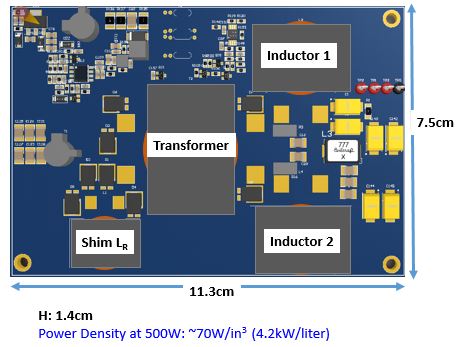LIBRARY
GaN-Based Isolated DC-DC Converter for Space Application

The design of an isolated dc-dc zero voltage switching (ZVS) full-bridge converter using a current doubler synchronous rectifier on the secondary side to achieve high efficiency and high power density while abiding to circuit design constraints encountered in rad-hard applications is described in this paper. The prototype uses a combination of radiation-hardened parts and industrial-rated components with radiation-hardened equivalent packages to keep prototyping costs down and parts procurement under control. Fig. 1 shows a high-level block diagram for converter topology. The power stage uses hermetically packaged rad-hard GaN FETs from Freebird Semiconductor. Low-profile planar magnetics using discrete helical-windings arrangements were selected for the transformer, and required resonant and output inductors for the current doubler rectifier.
Hard-switched and ZVS phase-shifted modulation schemes are compared in terms of component stress, efficiency, and conducted electromagnetic interference. Design methodology for hard-switched and ZVS full-bridge converters, and magnetics design tradeoffs are presented. Also, the main challenges encountered in designing radiation hardened power converters and their effects on converter design choices are briefly discussed.























































































